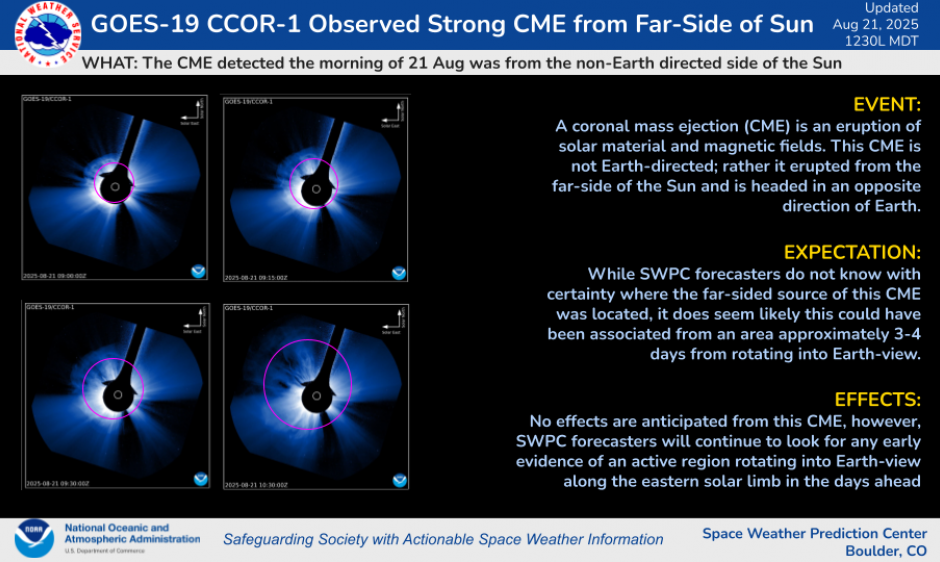
Speedy CME Erupts from the Far-Side of the Sun on 21 Aug
During the early morning hours of 21 Aug, a fairly fast coronal mass ejection (CME) erupted from the far-side of the Sun. Initial measurements of the estimated speed suggest it could be traveling at over 3,000,000 mph. If this CME had been Earth-directed, this means the CME could have arrived in close to 24 hours. The GOES-19 CCOR-1 imagery showed very clearly the movement and progression of this CME. The suspected source for this CME could possibly rotate into Earth-view in the next 3-4 days and our SWPC forecasters will be diligently searching for any evidence of such a feature. Stay informed by visiting our website.